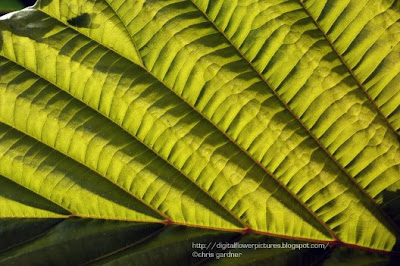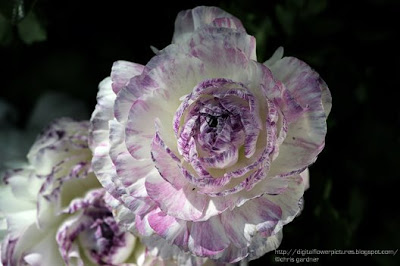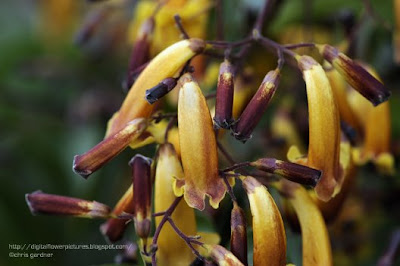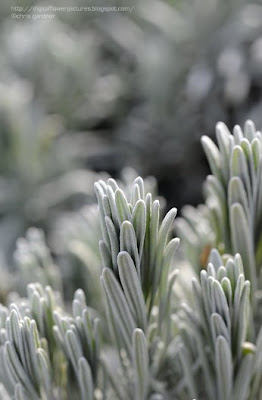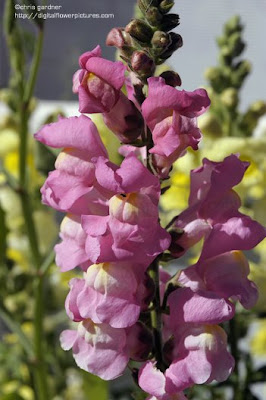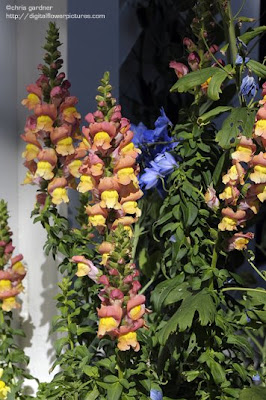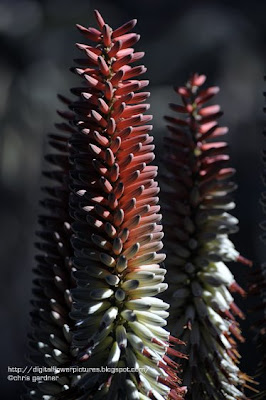
Blue Bush
Eucalyptus macrocarpa(yoo-kuh-LIP-tus) (ma-kro-KAR-pa)
Synonyms: Mottlecah, Desert Mallee
Today’s Flowers
This plant was a highlight in a day full of botanical magic yesterday. I drove up to the
Huntington Library in San Marino, California. Of all the gardens I have visited this one was one of the most stunning. On hindsight visiting on Valentine’s Day wasn’t the best idea since the garden was crowded with couples. Lucky I arrived early and had a couple of hours before the crowds started. The garden was unbelievable in many ways and the Desert and the Palm gardens were my favorite.
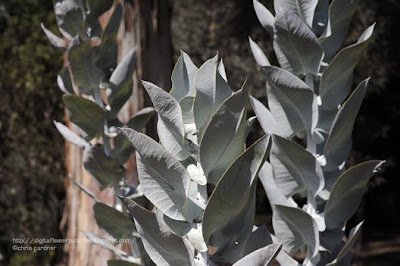 Blue Bush Foliage
Blue Bush FoliageThis Blue Bush was growing in the Australian garden, which had a large collection of plants from down under. The bright gray foliage and the red flowers caught my attention right away. From looking the plant up it is a long-lived perennial that grows to 12 feet tall and produces a decorative nut (I didn’t see any on the two specimens at the garden). It is hardy to USDA Zone 9 and has low water requirements once established. They can suffer from sooty mold and the plants at Huntington were suffering a bit from that.
The Camellia Festival was going on at the garden. Their collection was amazing and some were 30 to 40 feet tall and covered with blooms. The Magnolia, Cherry trees and Azaleas were also blooming. One of the most fascinating things to me was there were a lot of plants that grow back east and all of the tropical stuff, too.
 Saucer Magnolia
Saucer MagnoliaHere is a picture of the Cactus Collection; did I say it was amazing? It was. The paths kept circling around with more and more varieties and types to be seen.

I will be posting more Huntington pictures during the week. The camera seemed to be working well. I mostly used the D700 with the 60mm lens.
For more flower pictures from around the world visit
Today’s Flowers . It opens at 6pm GMT.
